Learning to Receive Help: Intervention-Aware Concept Embedding Models
Sep 29, 2023Mateo Espinosa Zarlenga, Katherine M. Collins, Krishnamurthy Dvijotham, Adrian Weller, Zohreh Shams, Mateja Jamnik
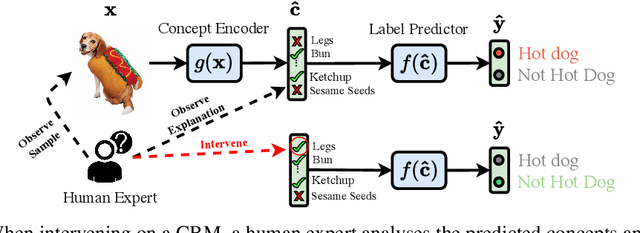



Concept Bottleneck Models (CBMs) tackle the opacity of neural architectures by constructing and explaining their predictions using a set of high-level concepts. A special property of these models is that they permit concept interventions, wherein users can correct mispredicted concepts and thus improve the model's performance. Recent work, however, has shown that intervention efficacy can be highly dependent on the order in which concepts are intervened on and on the model's architecture and training hyperparameters. We argue that this is rooted in a CBM's lack of train-time incentives for the model to be appropriately receptive to concept interventions. To address this, we propose Intervention-aware Concept Embedding models (IntCEMs), a novel CBM-based architecture and training paradigm that improves a model's receptiveness to test-time interventions. Our model learns a concept intervention policy in an end-to-end fashion from where it can sample meaningful intervention trajectories at train-time. This conditions IntCEMs to effectively select and receive concept interventions when deployed at test-time. Our experiments show that IntCEMs significantly outperform state-of-the-art concept-interpretable models when provided with test-time concept interventions, demonstrating the effectiveness of our approach.
Identifying and Mitigating Privacy Risks Stemming from Language Models: A Survey
Sep 27, 2023Victoria Smith, Ali Shahin Shamsabadi, Carolyn Ashurst, Adrian Weller
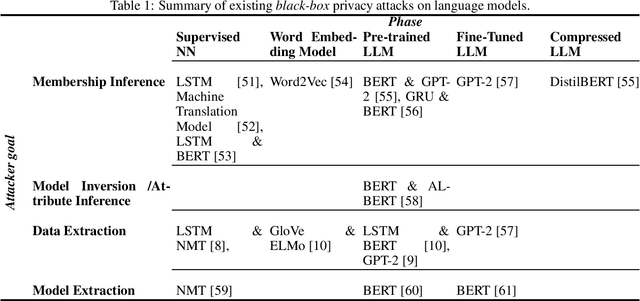
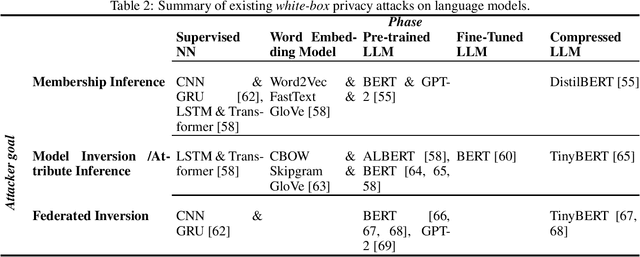
Rapid advancements in language models (LMs) have led to their adoption across many sectors. Alongside the potential benefits, such models present a range of risks, including around privacy. In particular, as LMs have grown in size, the potential to memorise aspects of their training data has increased, resulting in the risk of leaking private information. As LMs become increasingly widespread, it is vital that we understand such privacy risks and how they might be mitigated. To help researchers and policymakers understand the state of knowledge around privacy attacks and mitigations, including where more work is needed, we present the first technical survey on LM privacy. We (i) identify a taxonomy of salient dimensions where attacks differ on LMs, (ii) survey existing attacks and use our taxonomy of dimensions to highlight key trends, (iii) discuss existing mitigation strategies, highlighting their strengths and limitations, identifying key gaps and demonstrating open problems and areas for concern.
MetaMath: Bootstrap Your Own Mathematical Questions for Large Language Models
Sep 22, 2023Longhui Yu, Weisen Jiang, Han Shi, Jincheng Yu, Zhengying Liu, Yu Zhang, James T. Kwok, Zhenguo Li, Adrian Weller, Weiyang Liu
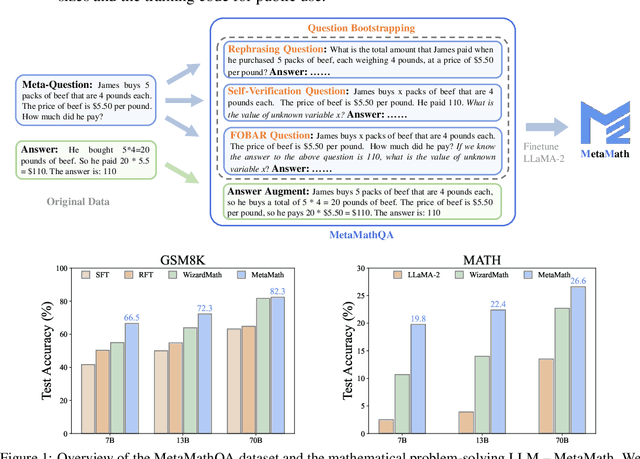

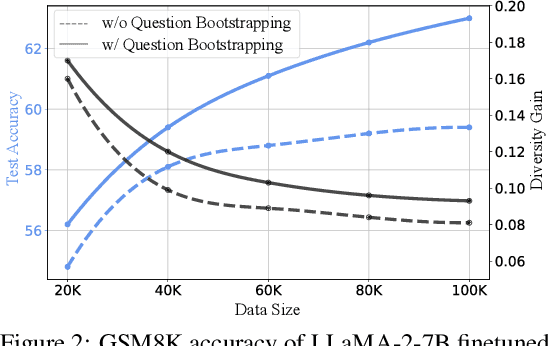

Large language models (LLMs) have pushed the limits of natural language understanding and exhibited excellent problem-solving ability. Despite the great success, most existing open-source LLMs (e.g., LLaMA-2) are still far away from satisfactory for solving mathematical problem due to the complex reasoning procedures. To bridge this gap, we propose MetaMath, a fine-tuned language model that specializes in mathematical reasoning. Specifically, we start by bootstrapping mathematical questions by rewriting the question from multiple perspectives without extra knowledge, which results in a new dataset called MetaMathQA. Then we fine-tune the LLaMA-2 models on MetaMathQA. Experimental results on two popular benchmarks (i.e., GSM8K and MATH) for mathematical reasoning demonstrate that MetaMath outperforms a suite of open-source LLMs by a significant margin. Our MetaMath-7B model achieves 66.4% on GSM8K and 19.4% on MATH, exceeding the state-of-the-art models of the same size by 11.5% and 8.7%. Particularly, MetaMath-70B achieves an accuracy of 82.3% on GSM8K, slightly better than GPT-3.5-Turbo. We release the MetaMathQA dataset, the MetaMath models with different model sizes and the training code for public use.
FeedbackLogs: Recording and Incorporating Stakeholder Feedback into Machine Learning Pipelines
Jul 28, 2023Matthew Barker, Emma Kallina, Dhananjay Ashok, Katherine M. Collins, Ashley Casovan, Adrian Weller, Ameet Talwalkar, Valerie Chen, Umang Bhatt

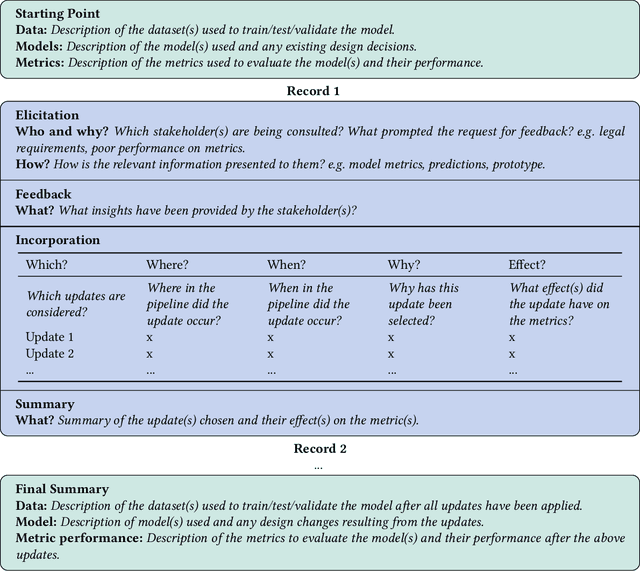
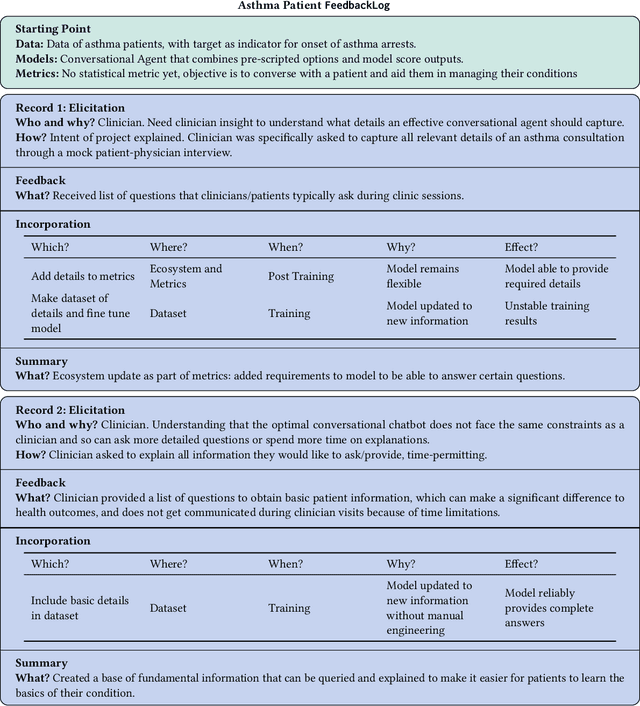
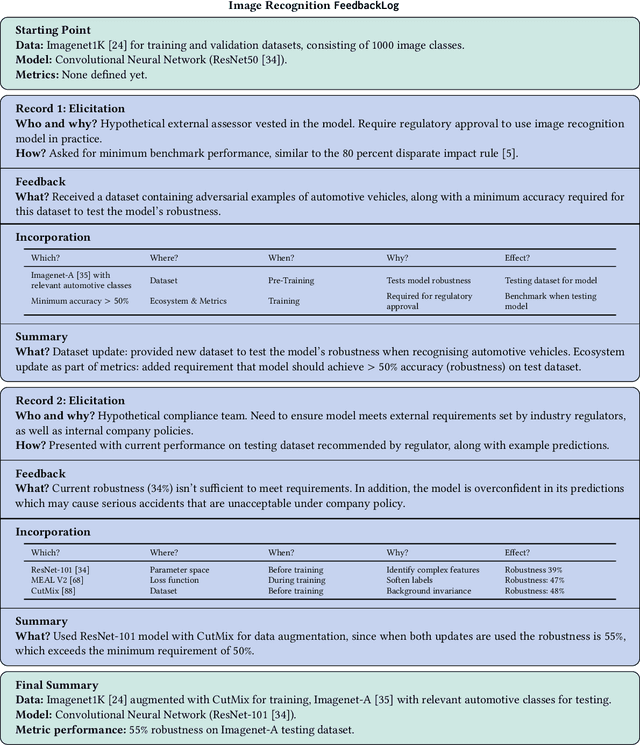
Even though machine learning (ML) pipelines affect an increasing array of stakeholders, there is little work on how input from stakeholders is recorded and incorporated. We propose FeedbackLogs, addenda to existing documentation of ML pipelines, to track the input of multiple stakeholders. Each log records important details about the feedback collection process, the feedback itself, and how the feedback is used to update the ML pipeline. In this paper, we introduce and formalise a process for collecting a FeedbackLog. We also provide concrete use cases where FeedbackLogs can be employed as evidence for algorithmic auditing and as a tool to record updates based on stakeholder feedback.
The Future of Fundamental Science Led by Generative Closed-Loop Artificial Intelligence
Jul 09, 2023Hector Zenil, Jesper Tegnér, Felipe S. Abrahão, Alexander Lavin, Vipin Kumar, Jeremy G. Frey, Adrian Weller, Larisa Soldatova, Alan R. Bundy, Nicholas R. Jennings, Koichi Takahashi, Lawrence Hunter, Saso Dzeroski, Andrew Briggs, Frederick D. Gregory, Carla P. Gomes, Christopher K. I. Williams, Jon Rowe, James Evans, Hiroaki Kitano, Joshua B. Tenenbaum, Ross King
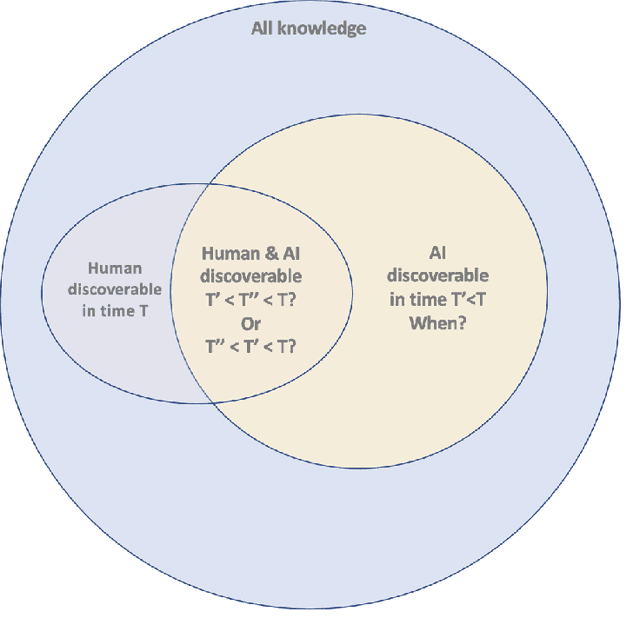
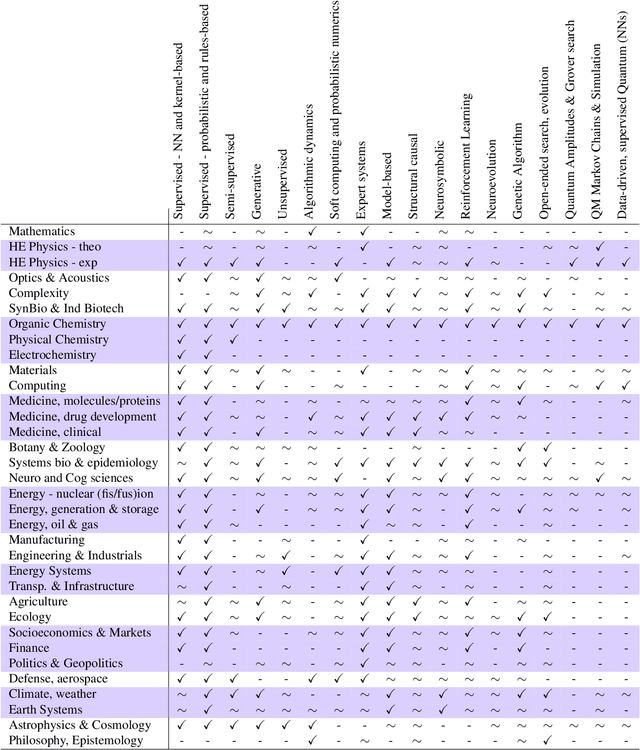
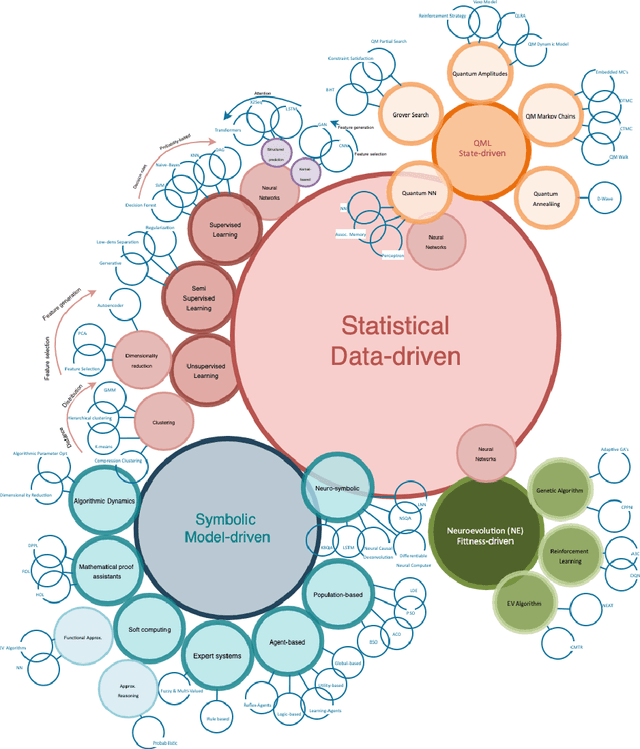
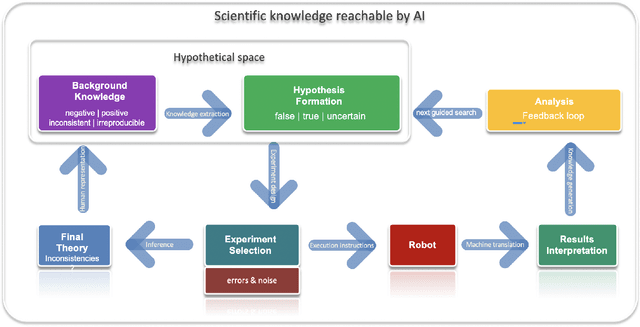
Recent advances in machine learning and AI, including Generative AI and LLMs, are disrupting technological innovation, product development, and society as a whole. AI's contribution to technology can come from multiple approaches that require access to large training data sets and clear performance evaluation criteria, ranging from pattern recognition and classification to generative models. Yet, AI has contributed less to fundamental science in part because large data sets of high-quality data for scientific practice and model discovery are more difficult to access. Generative AI, in general, and Large Language Models in particular, may represent an opportunity to augment and accelerate the scientific discovery of fundamental deep science with quantitative models. Here we explore and investigate aspects of an AI-driven, automated, closed-loop approach to scientific discovery, including self-driven hypothesis generation and open-ended autonomous exploration of the hypothesis space. Integrating AI-driven automation into the practice of science would mitigate current problems, including the replication of findings, systematic production of data, and ultimately democratisation of the scientific process. Realising these possibilities requires a vision for augmented AI coupled with a diversity of AI approaches able to deal with fundamental aspects of causality analysis and model discovery while enabling unbiased search across the space of putative explanations. These advances hold the promise to unleash AI's potential for searching and discovering the fundamental structure of our world beyond what human scientists have been able to achieve. Such a vision would push the boundaries of new fundamental science rather than automatize current workflows and instead open doors for technological innovation to tackle some of the greatest challenges facing humanity today.
The Neuro-Symbolic Inverse Planning Engine (NIPE): Modeling Probabilistic Social Inferences from Linguistic Inputs
Jun 27, 2023Lance Ying, Katherine M. Collins, Megan Wei, Cedegao E. Zhang, Tan Zhi-Xuan, Adrian Weller, Joshua B. Tenenbaum, Lionel Wong
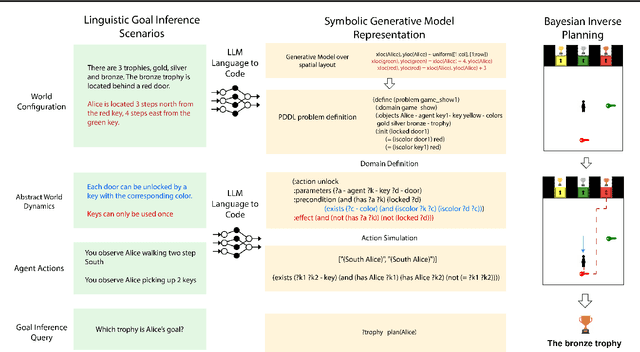
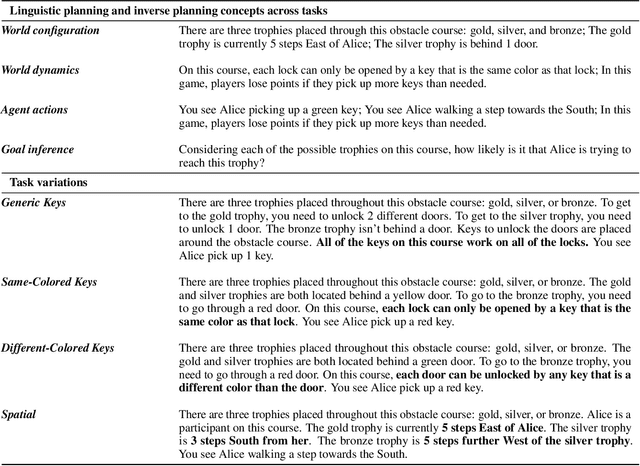

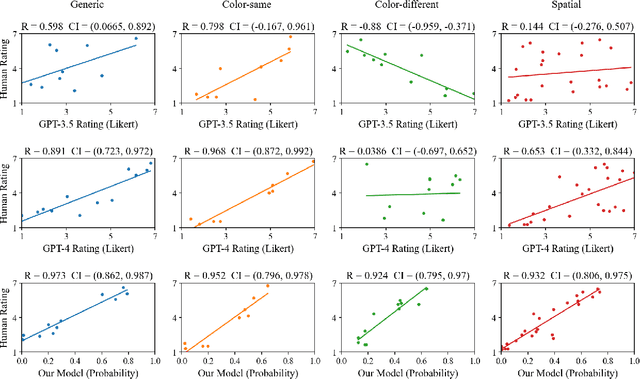
Human beings are social creatures. We routinely reason about other agents, and a crucial component of this social reasoning is inferring people's goals as we learn about their actions. In many settings, we can perform intuitive but reliable goal inference from language descriptions of agents, actions, and the background environments. In this paper, we study this process of language driving and influencing social reasoning in a probabilistic goal inference domain. We propose a neuro-symbolic model that carries out goal inference from linguistic inputs of agent scenarios. The "neuro" part is a large language model (LLM) that translates language descriptions to code representations, and the "symbolic" part is a Bayesian inverse planning engine. To test our model, we design and run a human experiment on a linguistic goal inference task. Our model closely matches human response patterns and better predicts human judgements than using an LLM alone.
Selective Concept Models: Permitting Stakeholder Customisation at Test-Time
Jun 14, 2023Matthew Barker, Katherine M. Collins, Krishnamurthy Dvijotham, Adrian Weller, Umang Bhatt
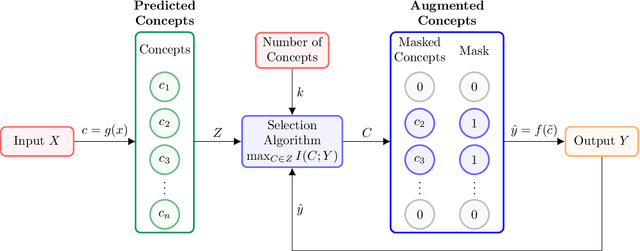
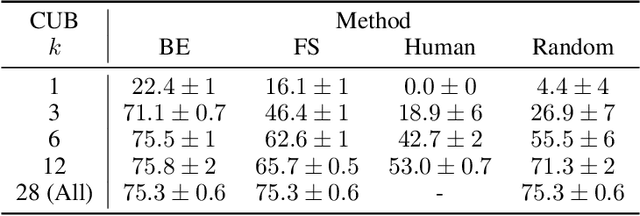
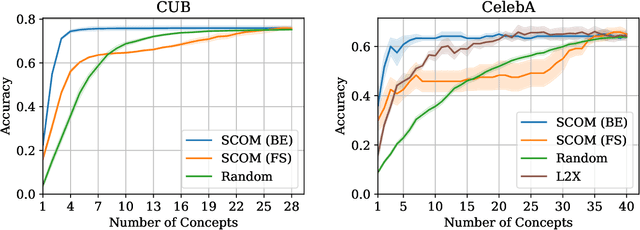

Concept-based models perform prediction using a set of concepts that are interpretable to stakeholders. However, such models often involve a fixed, large number of concepts, which may place a substantial cognitive load on stakeholders. We propose Selective COncept Models (SCOMs) which make predictions using only a subset of concepts and can be customised by stakeholders at test-time according to their preferences. We show that SCOMs only require a fraction of the total concepts to achieve optimal accuracy on multiple real-world datasets. Further, we collect and release a new dataset, CUB-Sel, consisting of human concept set selections for 900 bird images from the popular CUB dataset. Using CUB-Sel, we show that humans have unique individual preferences for the choice of concepts they prefer to reason about, and struggle to identify the most theoretically informative concepts. The customisation and concept selection provided by SCOM improves the efficiency of interpretation and intervention for stakeholders.
Controlling Text-to-Image Diffusion by Orthogonal Finetuning
Jun 12, 2023Zeju Qiu, Weiyang Liu, Haiwen Feng, Yuxuan Xue, Yao Feng, Zhen Liu, Dan Zhang, Adrian Weller, Bernhard Schölkopf
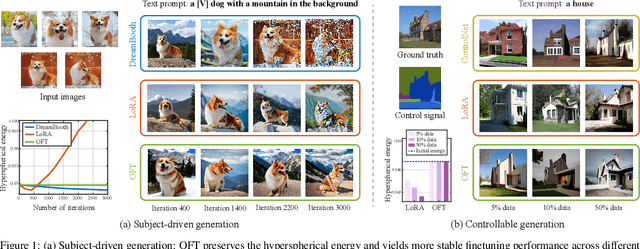
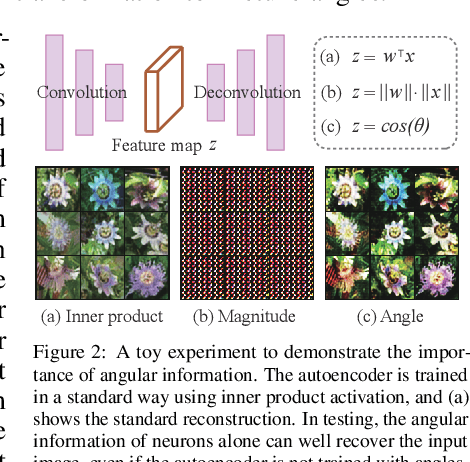
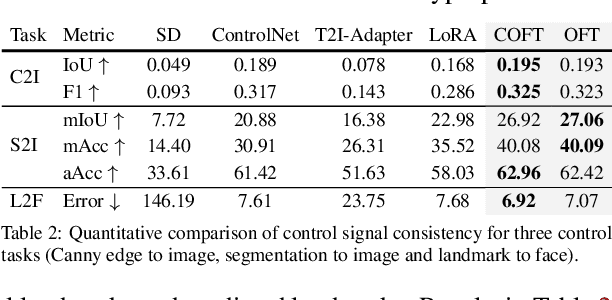
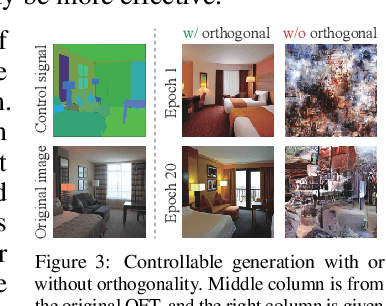
Large text-to-image diffusion models have impressive capabilities in generating photorealistic images from text prompts. How to effectively guide or control these powerful models to perform different downstream tasks becomes an important open problem. To tackle this challenge, we introduce a principled finetuning method -- Orthogonal Finetuning (OFT), for adapting text-to-image diffusion models to downstream tasks. Unlike existing methods, OFT can provably preserve hyperspherical energy which characterizes the pairwise neuron relationship on the unit hypersphere. We find that this property is crucial for preserving the semantic generation ability of text-to-image diffusion models. To improve finetuning stability, we further propose Constrained Orthogonal Finetuning (COFT) which imposes an additional radius constraint to the hypersphere. Specifically, we consider two important finetuning text-to-image tasks: subject-driven generation where the goal is to generate subject-specific images given a few images of a subject and a text prompt, and controllable generation where the goal is to enable the model to take in additional control signals. We empirically show that our OFT framework outperforms existing methods in generation quality and convergence speed.
Evaluating Language Models for Mathematics through Interactions
Jun 02, 2023Katherine M. Collins, Albert Q. Jiang, Simon Frieder, Lionel Wong, Miri Zilka, Umang Bhatt, Thomas Lukasiewicz, Yuhuai Wu, Joshua B. Tenenbaum, William Hart, Timothy Gowers, Wenda Li, Adrian Weller, Mateja Jamnik
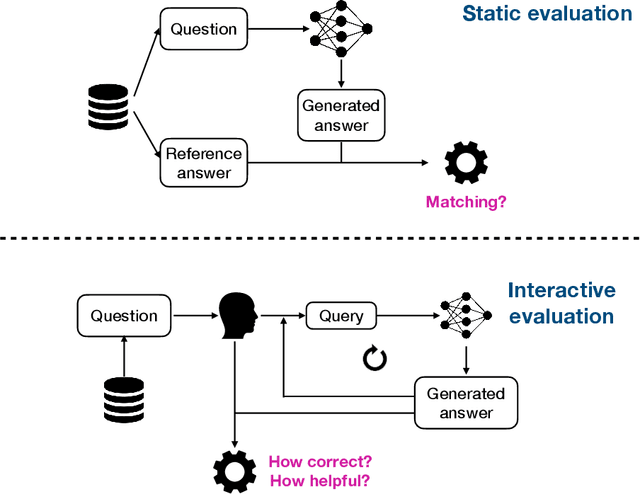
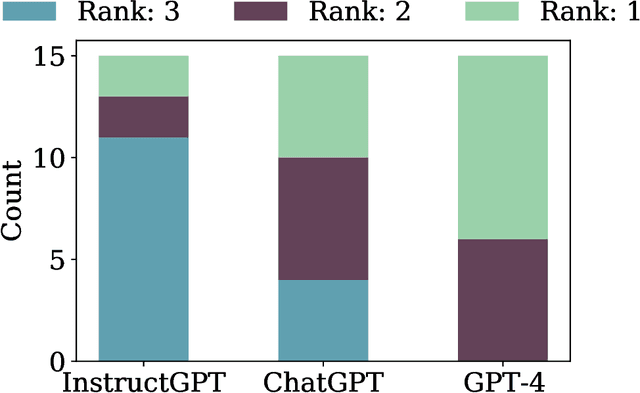
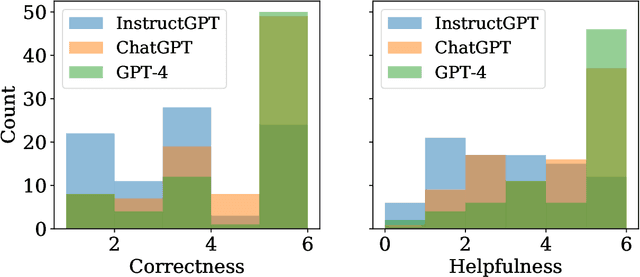
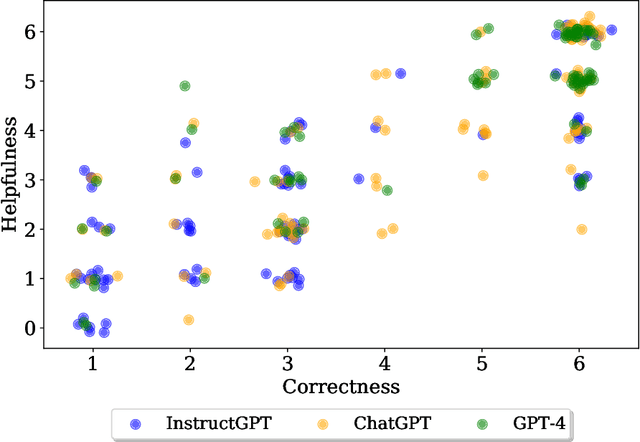
The standard methodology of evaluating large language models (LLMs) based on static pairs of inputs and outputs is insufficient for developing assistants: this kind of assessments fails to take into account the essential interactive element in their deployment, and therefore limits how we understand language model capabilities. We introduce CheckMate, an adaptable prototype platform for humans to interact with and evaluate LLMs. We conduct a study with CheckMate to evaluate three language models~(InstructGPT, ChatGPT, and GPT-4) as assistants in proving undergraduate-level mathematics, with a mixed cohort of participants from undergraduate students to professors of mathematics. We release the resulting interaction and rating dataset, MathConverse. By analysing MathConverse, we derive a preliminary taxonomy of human behaviours and uncover that despite a generally positive correlation, there are notable instances of divergence between correctness and perceived helpfulness in LLM generations, amongst other findings. Further, we identify useful scenarios and existing issues of GPT-4 in mathematical reasoning through a series of case studies contributed by expert mathematicians. We conclude with actionable takeaways for ML practitioners and mathematicians: models which communicate uncertainty, respond well to user corrections, are more interpretable and concise may constitute better assistants; interactive evaluation is a promising way to continually navigate the capability of these models; humans should be aware of language models' algebraic fallibility, and for that reason discern where they should be used.
Diffused Redundancy in Pre-trained Representations
May 31, 2023Vedant Nanda, Till Speicher, John P. Dickerson, Soheil Feizi, Krishna P. Gummadi, Adrian Weller

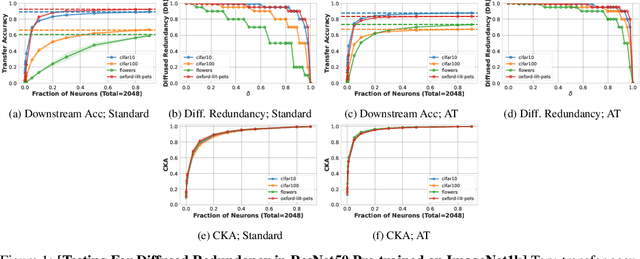


Representations learned by pre-training a neural network on a large dataset are increasingly used successfully to perform a variety of downstream tasks. In this work, we take a closer look at how features are encoded in such pre-trained representations. We find that learned representations in a given layer exhibit a degree of diffuse redundancy, i.e., any randomly chosen subset of neurons in the layer that is larger than a threshold size shares a large degree of similarity with the full layer and is able to perform similarly as the whole layer on a variety of downstream tasks. For example, a linear probe trained on $20\%$ of randomly picked neurons from a ResNet50 pre-trained on ImageNet1k achieves an accuracy within $5\%$ of a linear probe trained on the full layer of neurons for downstream CIFAR10 classification. We conduct experiments on different neural architectures (including CNNs and Transformers) pre-trained on both ImageNet1k and ImageNet21k and evaluate a variety of downstream tasks taken from the VTAB benchmark. We find that the loss & dataset used during pre-training largely govern the degree of diffuse redundancy and the "critical mass" of neurons needed often depends on the downstream task, suggesting that there is a task-inherent redundancy-performance Pareto frontier. Our findings shed light on the nature of representations learned by pre-trained deep neural networks and suggest that entire layers might not be necessary to perform many downstream tasks. We investigate the potential for exploiting this redundancy to achieve efficient generalization for downstream tasks and also draw caution to certain possible unintended consequences.
 Add to Chrome
Add to Chrome Add to Firefox
Add to Firefox Add to Edge
Add to Edge